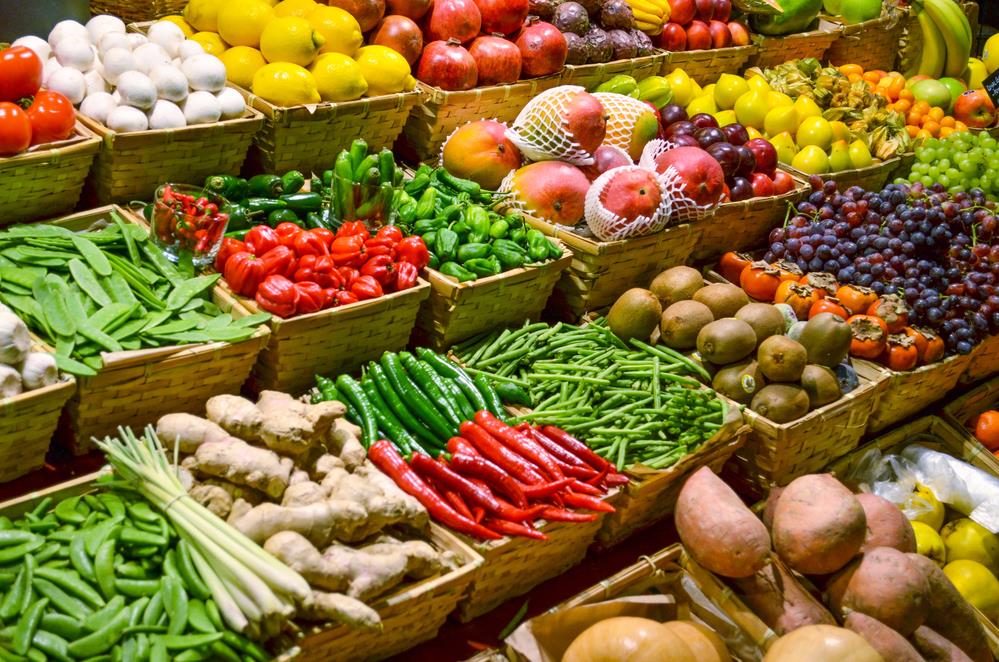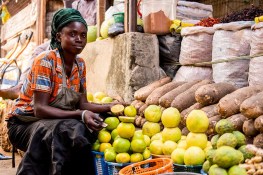Since 2019 with the advent of the Corona Virus, and a few months ago with the Russian Ukraine conflict, food systems around the world have been experiencing some sort of shock and insecurity. In Cameroon, the shock is even harder with the socio-political conflict in the two English speaking regions, and Boko Haram insurgencies in the Northern Regions. According to the World Food Program, food is a fundamental human right, and yet one in nine people around the world (805 million) go hungry every day.
Food security and why it matters
Food security is defined by the Food and Agriculture Organization (FAO) as: “When all people, at all times, have physical, social and economic access to sufficient, safe and nutritious food that meets their dietary needs and food preferences for an active and healthy life.” When the situation is opposite, where there is little or unhealthy food available for consumption, then there is food insecurity. Food security has four interrelated elements: availability, access, utilisation and stability. Availability is about food supply and trade, not just quantity but also the quality and diversity of food. Access covers economic and physical access to food. Utilisation is about how the body uses the various nutrients in food. A person’s health, feeding practices, food preparation, diversity of their diet and intra-household distribution of food all affect a person’s nutrition status. Stability is about being food secure at all times.
According to the Cadre Harmonisé results released in March 2022, 2.4 million people are food insecure in Cameroon and this number could increase due to climate change, soaring food prices, the COVID-19 pandemic, rapid population and urbanization growth as well as internal and external conflicts such as the crisis Anglophone Crisis and the war in Ukraine. A key priority for Cameroon over the coming years should be to address the deteriorating food security situation in the country. Achieving food security is every country’s goal, considering that food is one of the basic social amenities people expect from their government. To achieve this, certain aspects should be taken into consideration.
Agricultural Research and Development
According to the International Food Policy Research Institute (IFPRI), there is overwhelming evidence that over the past five decades, agricultural productivity around the world has been greatly enhanced by agricultural research and development. This has helped to improve the livelihoods of millions of the world’s poorest people. This means targeted investments in research and adoption of research outputs can produce direct and meaningful benefits to food-insecure people, most of whom are smallholder farmers. Across Cameroon, there is a substantial gap between potential yields and those occurring in farmers’ fields. This gap can be closed by giving farmers access to inputs like high-yielding and adapted crop varieties, fertiliser, animal health products and services like financial services and technical advice.
Leveraging science to adapt agriculture to climate change
This tasks calls for effective linkages between international, regional, and national science organizations with farmers. Climate change is a major issue affecting agriculture and crop production in Cameroon. Hence, to combat this, new sustainable ways of agriculture can be adopted. For example, Cameroon through Roland Fomundam is currently embracing greenhouse farming, which permits production of high quality, high yield crops, despite seasonal changes.

Harnessing digital technologies
One of the many advantages of today’s highly globalised and digitalised world is that digital technologies can be used to address many societal issues. Digital tools for monitoring climate risks can identify the onset of climatic shocks before they happen, and facilitate responses for building resilience. Automated irrigation systems, soil sensors, and drones can boost the efficiency of production. Digital tools can enhance food availability and accessibility, as well as improve food utilization and safety through effective monitoring of food hazards. E-commerce platforms can integrate smallholder farmers into value chains and enable them to eliminate the transaction costs of locating demand, determining prices, and improving efficiency in service delivery. There are several examples from across the globe that highlight the role of technology in transforming the lives of farmers. According to agricultural expert Chijioke Ndem, “Digital technology has revolutionized farming and agriculture especially for Africa. From accessing land, improved seed, mechanization and finance, smallholder farmers across the continent has been able to increase income and livelihood.”
Foreign Aid
Early this year, the United Nations World Food Programme (WFP) welcomed a 1.2 million U.S Dollars contribution from the Government of Japan to provide food and nutrition assistance to over 74,600 children, women and men in the Far North, North, Adamawa, East, North-West and South-West regions of Cameroon. The contribution from Japan will enable WFP provide school feeding and nutrition support to refugees, internally displaced persons (IDPs), returnees and host communities.
Access to land by women
As per 2011 statistics by the Food and Agriculture Organisation, if women had the same access to productive resources as men, they could increase yields in their fields by 20-30%. This alone would raise total agricultural output in developing countries by 2.5-4%, which could reduce the number of hungry people in the world by 12-17% or 100-150 million people. Levelling the playing field and providing women equal access to land, livestock, inputs like seed and agricultural equipment, extension support and credit is essential. Women and men must be equal partners in improving global food security.

Government policy
The governments contribution to ensuring food security is primordial. Cameroons government has several policies that seek to encourage farmers and agriculture in the country. In fact, there has been several calls by the president of the republic, telling young people to not be afraid of agriculture. However, a vast majority of the youth still shy away from agriculture in the country. What the country needs as far as agriculture is concerned are mechanisms that will boost young people’s role and engagement in this very important societal sector.
The agricultural and food sector remains a significant source of economic growth and job creation. Enhancing the agricultural sector, therefore, has enormous potential to improve the incomes and opportunities of people across the region. And when people have stable jobs, they are better able to cope with shocks without dipping into money needed for food.




